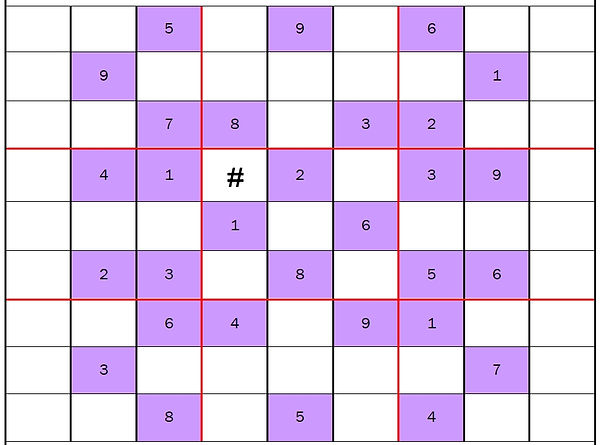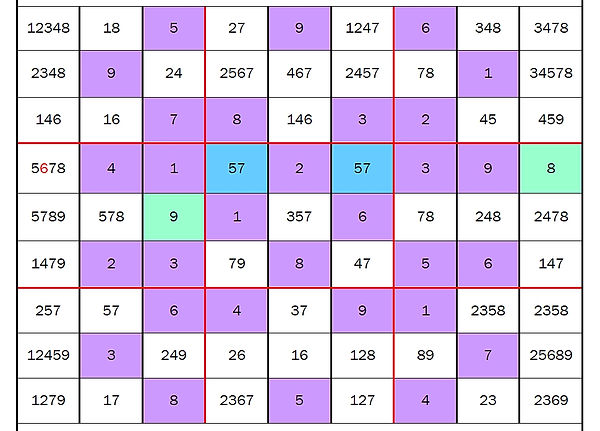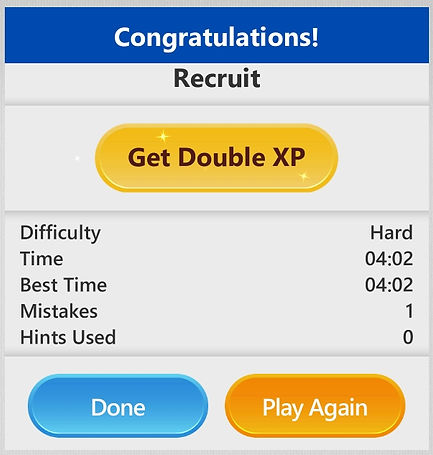
Add Text
to Create, and Solve SUDOKU puzzles
With help from Sherlock Holmes!
Despite the fact that Sherlock Holmes was portrayed as being logically minded, neither he, nor his creator, one Arthur Conan Doyle, were that. In truth, the author simply decided on the traits of the person Holmes used his elementary deduction on and set those traits as clues.
Almost a century after the author’s death, at the age of 70 in 1930; however, and one of the detective’s staid sayings can be used to solve ‘Sudoku’ number puzzles using a computer.
If, like me, you’ve seen the pilot episode of the US TV series ‘Banacek’, then you will have been made aware of the fact that towards the end of the episode, entitled ‘Detour to nowhere’, there is a telephone conversation between Thomas Banacek and the Felix character, during which, the aforementioned saying is mentioned by Felix:
‘When you eliminate the impossible, whatever remains, however improbable, must be the TRUTH’.
To both accomplish it and create (see end of article) your own sudoku puzzles, you need one of the following: either Microsoft Word or ‘Open office’, a freeware version of Microsoft office.
Whether you are solving or creating these fascinating logical number puzzles, you need to, using ‘Tables’, insert a 9 X 9 table (see graph 1 below). If necessary, draw the right side across the ‘Text width’ of the page so that it’s in line with the right margin. Next, highlight all of the columns and click ‘Distribute columns evenly’. Since there is only ever likely to be one line of numerical text in each row, as you will see, there is no need to change the height of the rows.
Save the document as: Blank Sudoku grid
Note, a full stop ‘.’, deliberately missing from the end of the previous sentence, is one of several symbols that cannot be included when saving a document, that’s because what follows a full stop is an extension, one that identifies the file’s type.
In this example, the numbers in the mauve coloured cells are the 30 original clue ones:

Using Holmes’ logic, the 51 remaining cells will, as you will soon see, contain the only numbers that can go in those 51 cells.
To accomplish that, you need to insert a blank paragraph and produce a second table like this:
Once again, save the file as it stands, it’s file name. When you come to use the ‘BLANK Sudoku grid’ to solve a Sudoku puzzle, simply save it as: Sudoku puzzle 1. Thereafter, Sudoku puzzle 2.
Starting with one of the 3 X 3 groups of cells, ideally, one with the most overall clue numbers inside it (Numbers Present, Column numbers and Row numbers), in this case, the one with a ‘#’ mark, do the following:
Type the letter ‘P’ for all of the clue numbers within the 3 X 3 grid directly below the corresponding number in the long 9 X 2 grid. Next, type the letter ‘C’ below any numbers that appear in the same column as the one with the ‘#’ in it, while obviously not doing so if the letter ‘P’ is already present, then, finally do the same for any numbers in the same row by typing the letter ‘R’.
Having done that, you should end up with this:
From that logical process, ‘eliminating the impossible’ the two ‘remaining’ numbers, 5 & 7, are the only numbers that can go in the square with the ‘#’ inside it.
Having carried out that same process for all the remaining cells (see final grid below), two of the cells, those coloured green, have a single, fixed option – that being the only number that can go in the cell. The two blue cells, on the other hand, both contain numbers 5 & 7, meaning that, one of those two numbers can only go in those cells on that row. So, taking that row as a starting point, and despite the fact that the first cell in the row is the only one with contestable numbers in the row, the number that goes there is ‘6’.

What of the rest, you ask? Start by deleting ‘9’ from those cells in the third column from the left that have more than one number in it and then do the same with the fifth row from the top.
It is important that you do not get ahead of yourself by acting on other changes. There is a clear and logical process to this. If you deviate from the process, mistakes can occur.
The next column to centre on is the far right one and the number ‘8’, which can be deleted from five cells in that column. Once you have done that, you simply select a column or row with the least contestable cells in it.
The third row from the top looks interesting.
To begin with, you may wish to copy out the above grid and play around with it. In which case, save it as:
Practice grid.
Good luck and enjoy solving all future Sudoku puzzles with help from Sherlock Holmes.
Footnote/addendum:
With the addition of ‘PhotoScape’, probably the best free photo editor app available to download, along with a 2nd PC (optional), you can, using the above, solve ‘Microsoft Sudoku’ classic puzzles on hard difficulty level and in a matter of minutes:

NB. Although, yes, it says 1 Mistake, that was when I inadvertently typed the same number (4 instead of 5) into consecutive boxes on the puzzle board.
Sounds easy, and, believe me, it is.
Having installed and opened Microsoft Sudoku, open PhotoScape and click ‘editor’ from the menu. Return to MS Sudoku and click Hard. In a matter of seconds the board opens with the clue numbers present. Take a screenprint of the board and then minimize it to the taskbart.
Using the PhotoScape editor, either click menu and click ‘Load your photo from clipboard’ or use the standard shortcut ‘Ctrl+V’.
All of Microsoft’s casual games, as well as its puzzles, store the information for games and puzzles that you have open, not yet completed. So, while the Sudoku board is minimized, the expired time is frozen.
All you need now do, is transfer the clue numbers on the screenprint to your saved document and follow the instructions above. Remember, though, to change the background colour of all the clue numbers to the same colour, that way you’ll instantly know which numbers you need to transfer from the completed Sudoku board to the restored Microsoft Sudoku board.
NB. As mentioned, by using a second PC, not the one that the game is installed on, and with the document open, once completed, the time it takes to fill in the MS Sudoku board will be a lot shorter time.
Creating your own sudoku puzzles.
Despite what you may think, the process of creating sudoku puzzles is relatively easy.
Most people, I dare say, visualise the people who compile them to remove all but the clue numbers from a completed board. In which case, how do you start the process? And there in lies the clue.
Only the clue numbers are inserted, while keeping to the rules of distribution. They being, as you surely know, no duplicate(s) of the same number in any row, column are 3 X 3 grid.
In checking an edition of the METRO newspaper, easy level has 36 clue numbers, evenly distributed using the numbers 2 to 9 (there being no clue number 1’s among the 36). Moderate had 32 clue numbers and all 9 clue numbers were evenly used. Challenging had 26 clue numbers evenly distribute using all 9 numbers.
My suggestion for saving sudoku puzzles that you create yourself, maybe send to friends and work colleagues is:
My sudoku puzzle 1.

Contact us: the.irrefutable.truth2020@gmail.com